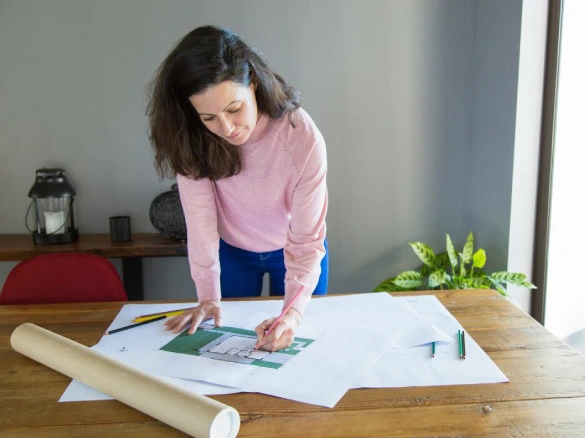When we think of interior design, images of stylish living rooms, elegant offices, or chic cafés often come to mind. But today’s design world is no longer just about the looks. It is about moving towards something bigger and more urgent. Sustainability. Every choice an interior designer makes, from the materials they select to the way they plan and light a space, carries an environmental impact. In an era defined by climate change and resource challenges, design isn’t just about beauty; it’s about responsibility.
This is where the role of a forward-thinking interior design institute in Mumbai becomes vital, preparing students for a career that balances aesthetics with social responsibility. Beyond teaching creativity and technical skills, the right institute nurtures mindful professionals who design with both people and the planet in mind. And at the L.S. Raheja School of Architecture (LSRSoA) in Mumbai, sustainability is not treated as a passing trend; it is woven into the fabric of their courses.
What Sustainable Interior Design Really Means
Sustainable interior design doesn’t mean compromising on beauty. Sustainable interiors focus on reducing environmental impact while still creating beautiful spaces. This can include:
- Using upcycled or recycled materials – repurposing existing materials reduces waste while inspiring innovative design solutions.
- Energy-efficient planning – optimising natural light, ventilation, and spatial layouts to minimise energy consumption.
- Locally sourced materials – reducing carbon footprints while supporting local industries.
- Mindful spatial design – creating versatile, functional spaces that encourage long-term sustainability.
At its core, sustainability is about creating spaces that are beautiful, functional, and environmentally conscious. Students who learn these principles early are better prepared to meet the growing demand for eco-friendly interiors in India.
Thinking Differently: The Skillset of Tomorrow
To thrive as interior designers in a world that values sustainability and innovation, students must cultivate a blend of skills:
- Analytical Thinking: Understanding spatial dynamics, workflow, and material properties.
- Creative Problem-Solving: Designing within constraints, such as limited budgets or environmental regulations.
- Technical Competence: Mastering software for 3D modelling, BIM, and rendering.
- Communication Skills: Articulating ideas to clients, contractors, and multidisciplinary teams.
- Ethical Decision-Making: Making choices that balance beauty, functionality, and ecological responsibility.
By developing this mix of skills, students prepare themselves for roles where they aren’t just following trends; they’re leading them.
Learning Through Experience
Practical exposure is crucial. Students can build real-world skills through:
- Studio-Based Projects: Simulated briefs that challenge students to integrate aesthetics with environmental considerations.
- Material Experiments: Exploring sustainable finishes, adaptive reuse of materials, and innovative construction methods.
- Site Visits: Observing real-world interiors and understanding how design translates from concept to reality.
- Collaborative Projects: Working with peers on cross-disciplinary tasks to simulate professional design teams.
These experiences develop both technical ability and critical thinking, allowing students to see beyond the “look” of a space to the impact of their design decisions.
Staying Ahead Through Continuous Learning
The design industry evolves rapidly. Students must cultivate a mindset of lifelong learning:
- Follow Industry Trends: Attend workshops, webinars, and exhibitions that focus on sustainable and innovative interiors.
- Engage with Professionals: Guest lectures, mentorships, and networking help students understand current challenges and solutions in the field.
- Experiment and Iterate: Learning through trial, error, and iteration helps students build resilience and originality.
- Sustainability Research: Staying informed about new materials, techniques, and technologies ensures that designs remain eco-conscious and cutting-edge.
Developing this habit of continuous learning ensures that students remain adaptable and competitive.
Why This Matters for Aspiring Designers
Interior design is about more than aesthetics; it’s about shaping how people live and interact with the world. By choosing an interior design institute that champions sustainability, students ensure their careers are not only future-ready but also future-friendly.
At L.S. Raheja School of Architecture, students gain the technical skills, creative vision, and ethical grounding needed to succeed in today’s design industry. For students exploring a career in interior design, choosing an institute that embeds sustainability into every project ensures they graduate not only as skilled designers but also as responsible professionals shaping eco-friendly interiors for the future, balancing beauty with responsibility.



